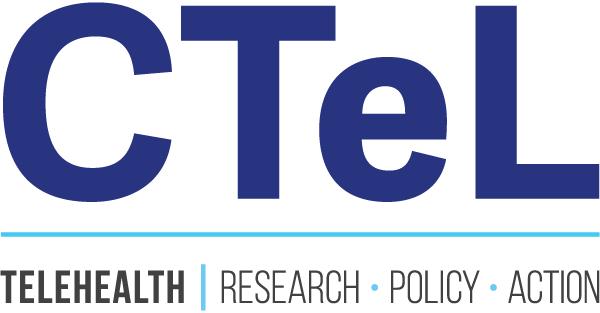Advancing U.S. Leadership in Artificial Intelligence Infrastructure: A Landmark Executive Order
On January 14, 2025, President Biden issued the Executive Order on Advancing U.S. Leadership in Artificial Intelligence Infrastructure, a bold move to position the United States at the forefront of global AI development. The Center for Telehealth and e-Health Law (CTeL) applauds this initiative as a forward-thinking approach to fostering innovation while ensuring necessary safeguards are in place.
This landmark executive order aims to accelerate the development of AI infrastructure by leveraging federal resources, promoting clean energy, and ensuring equitable access to AI advancements.
Key Provisions of the Executive Order
1. Federal Support for AI Data Centers
The EO mandates federal agencies, including the Department of Defense (DOD) and Department of Energy (DOE), to lease federal sites for gigawatt-scale AI data centers. Developers must:
Cover all costs for building, operating, and maintaining AI infrastructure.
Procure clean energy tailored to the data center’s needs.
Adhere to stringent national security and lab-security requirements.
Maintain high labor standards.
Purchase domestically manufactured semiconductors.
2. Clean Energy and Infrastructure Goals
Catalyze new clean energy generation to power AI infrastructure sustainably.
Prioritize swift permitting for AI projects on federal sites.
Accelerate the development of transmission infrastructure to support these data centers.
Ensure interconnection of AI infrastructure to the electric grid.
3. Cost Protections for Consumers
The EO requires contractors to avoid passing on construction and operational costs to consumers, ensuring equitable economic impacts.
4. International Collaboration
The U.S. will coordinate internationally to develop AI infrastructure standards and practices, ensuring global competitiveness and cooperation.
CTeL’s Perspective
CTeL commends the Executive Order for balancing AI innovation with consumer protections and sustainability. However, we urge policymakers to address the disparities in health technology access, particularly in rural and underserved communities.
Challenges for Smaller Health Systems
Smaller hospitals and rural health systems often face barriers to adopting cutting-edge technologies due to the high costs of procurement and deployment.
Without adequate funding and technical support, these institutions risk falling further behind in leveraging AI’s potential to improve patient outcomes.
CTeL’s Call to Action
Government Support: State and federal governments must provide grants and technical assistance to ensure health systems of all sizes can adopt AI technologies.
Equity in Deployment: Policies must prioritize equitable distribution of AI tools to avoid exacerbating existing disparities in healthcare.
Collaboration Across Sectors: The health and tech sectors should work together to identify scalable solutions for deploying AI in underserved areas.
Why This Matters for Telehealth and Healthcare AI
AI has the power to transform healthcare delivery, particularly in telehealth, where it enhances accessibility, efficiency, and patient outcomes. This Executive Order provides a framework for innovation while ensuring the infrastructure necessary to support AI adoption. Here’s why this matters:
1. Expanding Telehealth Capabilities with AI
Improved Diagnosis and Treatment: AI-powered tools can analyze large datasets, improving diagnostic accuracy and enabling personalized treatment plans through telehealth platforms.
Administrative Efficiencies: AI has the potential to reduce administrative burdens, such as automating patient intake, scheduling, and insurance verification, allowing providers to focus on care delivery.
Rural Access: Telehealth, supported by AI, bridges the gap for patients in rural or underserved areas, reducing the need for travel and enabling real-time specialist consultations.
2. Addressing Workforce Shortages
Healthcare faces a growing shortage of providers, particularly in rural areas. AI can assist by:
Enhancing decision-making for non-specialist providers.
Supporting remote patient monitoring to reduce the burden on in-person care.
Expanding access to behavioral health services through AI-driven telemental health platforms.
3. Legislative Support for AI in Healthcare
The Executive Order aligns with several legislative efforts aimed at advancing healthcare innovation:
The AI in Government Act of 2020: Encourages the federal government to adopt AI to improve public services, including healthcare.
The 21st Century Cures Act: Focuses on accelerating innovation and modernizing healthcare technologies, including AI integration for clinical decision-making.
Telehealth Extension and Evaluation Act: Extends flexibilities introduced during the pandemic, supporting the use of AI-powered telehealth for chronic care management and other services.
Infrastructure Investment and Jobs Act (2021): Includes significant funding for broadband expansion, a critical enabler for telehealth and AI adoption in underserved regions.
4. Supporting Health Equity
AI-powered telehealth can reduce disparities in healthcare access by:
Providing specialized care to communities with limited local resources.
Enhancing the ability to detect and treat conditions in diverse populations through more representative datasets and analysis.
5. Economic and Policy Implications
The requirement to use domestically manufactured semiconductors and renewable energy supports economic growth while ensuring sustainability. By promoting infrastructure investments and creating jobs, the Executive Order builds a robust foundation for a resilient healthcare system powered by AI.
Next Steps
CTeL will continue advocating for policies that:
Foster innovation in healthcare AI while maintaining strong consumer protections.
Address the unique challenges faced by rural and smaller health systems.
Promote collaboration between federal agencies, private developers, and healthcare providers.
Stay tuned for more insights and updates on how this Executive Order shapes the future of AI in healthcare and beyond.
📩 Questions or Comments? Contact us at info@ctel.org.
Are you a digital health startup, vendor, or provider who has technology which greatly impacts healthcare? We’d love to showcase your work! Find out more about CTeL’s upcoming Digital Health-Tech and AI Showcase on Capitol Hill on March 12, 2025.


